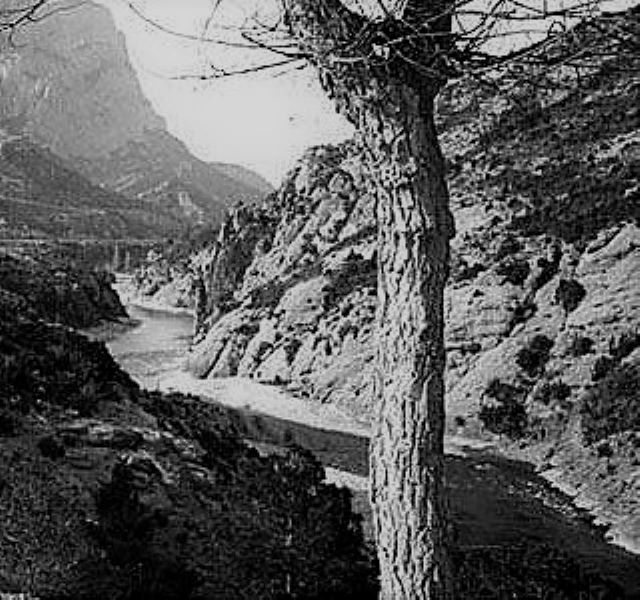A GORGE IN THE LEGEND OF THE SEGRE (Part II)
The Hostal dels Espluvins was built in the late 1780s and was accessed via a winding, stony path that bordered the Segre. It was the only place to spend the night, feed horses and mules, or rest between days of hunting. It was also a meeting place for smugglers and, later, Carlist parties.
It was precisely there that the Count of Spain stayed before being assassinated on the Espía Bridge near Nargó, and curiously, his bound body was found days later, dragged eight kilometers by the waters of the Segre. This episode occurred in 1839 at the end of the First Carlist War. The Count, who had a reputation as a sadist and murderer, was also horribly murdered on the Espía Bridge that crosses the Segre by his captors, who strangled and stabbed him repeatedly before finally throwing him off the bridge with a stone tied around his neck. The body traveled several kilometers downriver before finally becoming stranded in front of the inn where it had spent the night with its captors days before.
From the hostel, one could see the rafters, known in Catalan as Raiers, who brought down the Pyrenean pine logs, transporting them across the river, tied together in the form of a raft. In this dangerous crossing of the Segre, known as the Garanta, they had to be untied and laboriously transported along a path on the eastern side of the gorge to avoid the terrifying whirlpool, where everything that fell into it disappeared forever.
In 1896, probably in late summer, terrible torrential rains broke out in the Catalan Pre-Pyrenees. The Turp and Aubenç mountains, as well as the Cadí limestone cliff, were exposed to a continuous bombardment of torrential rain, causing a massive collapse of part of a cliff in Aubenç. Four thousand tons of rock swept the entire Hostal dels Espluvins, along with its horses, buildings, and all staff, into the deep, turbulent waters of the Segre Gorge, which the rain turned into a chaotic sea. There, the inn and ten people disappeared forever, including guests and workers at the inn, along with their horses, mules, and all the estate’s livestock. Only three people survived, one of them a muleteer who managed to cling to the branches of a fig tree that curiously resisted the apocalyptic avalanche. The other two were the owner of the hostel, Antoni Saña, and his son, who were taking some animals to a field near the hostel at the time.
The road work, which had begun years earlier, was halted for many months and wasn’t completed until the beginning of the next century, with the road reaching La Seu in 1906.
Currently, the inhospitable gorge is almost entirely covered by the waters of the Oliana reservoir. It is easily accessible via the road that connects directly to the open valley of La Seu d’Urgell and Cerdanya. The road has six tunnels, and the gorge is located at the exit of the fourth tunnel, heading towards La Seu d’Urgell. The tunnel is also called Espluvins. After the tunnel, you can park on the right side of the road and see the area. It is always windy to very windy; it is the “Espunyola” wind.
This was my feeling after visiting it several times:
“The Espluvins Gorge, now covered and hidden by the waters of the reservoir, continues to inspire fear, and even on my last visit, I could feel the wind from L’Espunyola on my face as it rippled the waters of the reservoir. Parking the car on the side of the road, I could contemplate the fearsome cliffs and the cluster of ancient rocks that plunge into the opposite shore. The silence is total; only the wind and the absolutely intractable harshness of the place, shrouded in a stormy sky, invite me to leave.”
~Carles V.

